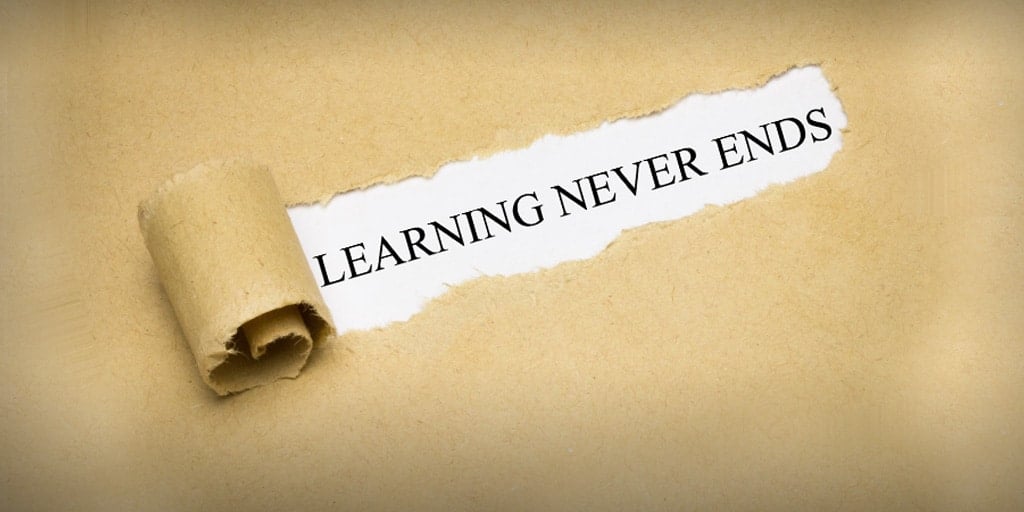How to Encourage Lifelong Learning Habits is all about fostering a culture of continuous education that enriches both personal and professional lives. In a world where change is the only constant, embracing lifelong learning not only enhances your adaptability in the job market but also contributes positively to your mental health and cognitive abilities. By creating a supportive environment, setting achievable goals, and utilizing various resources, anyone can cultivate habits that promote learning throughout their lives.
Whether it’s through online platforms, community resources, or engaging with like-minded individuals, the journey of learning can be both fulfilling and accessible. This guide aims to provide you with practical strategies and insights to seamlessly integrate learning into your everyday life, making it an enjoyable and rewarding experience.
Importance of Lifelong Learning
Lifelong learning is a continuous, self-motivated pursuit of knowledge and skills throughout an individual’s life. It plays a crucial role in both personal and professional development, allowing individuals to adapt to the evolving demands of the world around them. The benefits of lifelong learning extend far beyond mere career advancement; they also touch upon emotional well-being and cognitive health.Lifelong learning equips individuals with the tools to navigate an ever-changing job market.
The rapid pace of technological advancement and shifting industry standards necessitate a workforce that is not only skilled but also adaptable. As professions evolve or disappear, the ability to learn new things becomes vital for maintaining employability. Continuous education and skill enhancement allow individuals to stay relevant, making them more competitive in their fields.
Benefits for Mental Health and Cognitive Function
Engaging in lifelong learning significantly contributes to mental health and cognitive function. The act of learning stimulates the brain, enhancing neural connections and promoting overall brain health. Here are some of the positive impacts of lifelong learning on mental well-being:
-
Improved Cognitive Resilience:
Continuous learning helps maintain cognitive abilities, reducing the risk of memory-related issues as one ages.
-
Enhanced Emotional Well-being:
Acquiring new skills and knowledge can boost self-esteem and create a sense of accomplishment, leading to greater overall satisfaction in life.
-
Social Engagement:
Lifelong learning often involves community participation, fostering social connections that can combat feelings of isolation and loneliness.
-
Stress Reduction:
Learning new things can provide a healthy distraction from daily stressors, promoting mental clarity and relaxation.
By investing in lifelong learning, individuals not only enrich their professional qualifications but also cultivate a healthier, more vibrant mental state. The integration of new knowledge and skills creates a fulfilling and adaptive life that is less susceptible to the challenges posed by change.
Creating a Learning Environment: How To Encourage Lifelong Learning Habits
Establishing a conducive learning environment at home is essential for fostering lifelong learning habits. A supportive atmosphere not only enhances knowledge retention but also cultivates a positive attitude toward education. This section will explore key elements of such an environment, along with practical strategies to seamlessly integrate learning into daily routines.
Key Elements of a Supportive Learning Environment, How to Encourage Lifelong Learning Habits
Creating a positive learning environment involves several fundamental elements. These factors work together to encourage engagement, curiosity, and motivation in learners of all ages. The following aspects are crucial:
- Comfortable Space: A dedicated area for learning should be inviting and free from distractions. This space should include comfortable seating, good lighting, and necessary supplies readily available.
- Access to Resources: Having a variety of educational materials, such as books, online resources, and learning apps, encourages exploration and self-directed learning.
- Supportive Atmosphere: Family members should foster an encouraging atmosphere where questions are welcomed, and mistakes are viewed as learning opportunities. This helps to build confidence in learners.
- Regular Schedule: Establishing a consistent learning schedule helps to create a routine that integrates learning into daily life, making it a natural part of the day.
Incorporating Learning into Daily Routines
Integrating learning into everyday activities can significantly enhance a child’s or adult’s educational journey. Making learning a part of routine helps in establishing lifelong habits. Here are some practical strategies:
- Use Daily Activities: Incorporate learning during meal preparations, grocery shopping, or even during household chores by discussing measurements, budgeting, or problem-solving.
- Set Learning Goals: Encourage family members to set achievable learning goals, whether it’s reading a certain number of books each month or exploring a new skill.
- Family Learning Projects: Engage in projects that require collaboration and research, such as creating a family garden, which teaches about biology and responsibility.
- Encourage Discussions: Make it a habit to have meaningful discussions about current events, books, or personal interests during meals or family gatherings.
Establishing a Distraction-Free Study Space
A dedicated study space free from distractions is vital for effective learning. This environment allows for better focus and retention of information. Here are strategies to create such a space:
- Choose the Right Location: Select a quiet area in the home, away from high-traffic zones, where interruptions are minimized.
- Limit Electronic Distractions: Keep smartphones and other electronic devices away from the study area, or use apps that limit notifications during study time.
- Organize Supplies: Ensure that all necessary supplies, such as books, stationery, and technology, are organized and easily accessible to reduce frustration and distractions.
- Personalize the Space: Allow learners to personalize their study area with items that inspire and motivate them, such as posters, quotes, or creative art.
“A well-structured learning environment not only supports academic success but also nurtures a love for learning that lasts a lifetime.”
Setting Goals for Learning
Establishing effective learning goals is a fundamental step in fostering lifelong learning habits. When individuals set clear and achievable objectives, they can channel their efforts and resources more efficiently. This structured approach not only enhances the learning experience but also cultivates a growth mindset, encouraging persistence and resilience in the face of challenges.Creating a framework for setting learning goals involves understanding the principles of clear and measurable objectives.
One effective method is to employ the SMART criteria, which stands for Specific, Measurable, Achievable, Relevant, and Time-bound. This approach helps learners focus on what they want to achieve and provides a roadmap to reach their aspirations. For instance, instead of stating, “I want to learn Spanish,” a SMART goal would be, “I will complete three online Spanish courses over the next six months and practice speaking with a native speaker once a week.”
Breaking Down Long-Term Learning Objectives
Long-term learning objectives can often feel overwhelming, making it essential to break them down into manageable steps. This process allows learners to focus on smaller, actionable tasks that contribute to their overall goal, preventing frustration and maintaining motivation. The following steps can help in this breakdown:
1. Identify the Long-Term Objective
Start with a clear vision of what you want to achieve in the long run.
2. Divide into Short-Term Goals
Break the long-term objective into shorter, specific goals. This can typically be broken down by months or weeks, depending on the complexity of the learning area.
3. Create Action Plans
For each short-term goal, develop a detailed plan that includes resources needed, time commitments, and methods of study.
4. Schedule Regular Checkpoints
Set specific dates to review progress on each short-term goal, allowing for adjustments as necessary.This method transforms daunting goals into a series of attainable tasks, making the learning journey more enjoyable.
Tracking Progress and Celebrating Achievements
Monitoring progress is crucial in maintaining motivation and ensuring that learning goals are being met. Several effective methods can facilitate this tracking process:
Journaling
Regularly writing down what you’ve learned and reflecting on your experiences can offer insights into your progress.
Progress Charts
Using visual aids, such as charts or graphs, to track milestones can provide a satisfying way to visualize advancement.
Accountability Partners
Pairing up with a friend or mentor can create a supportive environment where progress is discussed, and achievements are celebrated.Celebrating achievements, no matter how small, is vital in reinforcing positive learning habits. Acknowledgment can take various forms, such as treating oneself after completing a course or sharing milestones with friends and family. This not only boosts morale but also solidifies the commitment to ongoing learning.
“Setting goals is the first step in turning the invisible into the visible.” – Tony Robbins
Utilizing Resources for Learning
In today’s digital age, the accessibility of learning resources has transformed how individuals pursue knowledge. With an abundance of online platforms and community resources available, everyone has the opportunity to cultivate lifelong learning habits. This section explores various tools and environments that facilitate self-directed learning, compares traditional versus modern learning methods, and highlights community resources that support ongoing education.
Online Platforms and Tools for Self-Directed Learning
Numerous online platforms offer diverse learning opportunities that cater to different interests and learning styles. These resources empower learners to take control of their educational journeys, enabling them to explore subjects at their own pace. Here are some noteworthy platforms:
- Coursera: This platform partners with universities and organizations to provide courses on a wide range of topics. Users can access free courses or opt for paid certificates, enhancing their resumes with recognized qualifications.
- edX: Similarly, edX offers university-level courses in various subjects, often for free. It also provides professional certificates, allowing learners to expand their expertise.
- Khan Academy: Aimed primarily at school-age learners, this free platform covers subjects like math, science, and humanities. Its adaptive learning tools cater to individual student needs.
- Duolingo: For those interested in language learning, Duolingo offers a gamified approach, making it engaging and accessible for all age groups.
- LinkedIn Learning: This subscription-based service provides thousands of courses focused on professional development, covering skills relevant in today’s job market.
Comparison of Traditional Learning Methods and Digital Resources
Traditional learning methods, such as classroom settings and textbooks, often provide structured environments and direct interaction with educators. However, they may lack the flexibility and immediacy that digital resources offer. Modern digital learning resources provide a self-paced approach that allows learners to customize their educational paths. Some key differences include:
| Aspect | Traditional Learning | Digital Learning |
|---|---|---|
| Flexibility | Fixed schedule, location-based | On-demand access, learn anywhere |
| Interaction | Face-to-face with instructors | Forums, webinars, interactive features |
| Resource Availability | Limited to textbooks and printed materials | Wide range of multimedia resources |
| Cost | Often expensive | Many free or affordable options |
Community Resources Supporting Lifelong Learning
Community resources play a vital role in fostering lifelong learning. Libraries, workshops, and local organizations provide opportunities for individuals to engage in educational activities outside of traditional schooling. These resources often include:
- Public Libraries: Libraries provide access to a vast collection of books, e-books, and databases, along with free workshops and seminars on various subjects.
- Community Colleges: Offering affordable courses, these institutions cater to adult learners looking to gain new skills or advance their knowledge.
- Meetup Groups: Local groups dedicated to specific interests or skills facilitate networking and learning through shared experiences and discussions.
- Workshops and Seminars: Many organizations host workshops that provide hands-on learning experiences, allowing participants to develop practical skills in a supportive environment.
Utilizing both online and community resources enriches the learning experience, making knowledge acquisition more accessible and engaging for everyone.
Encouraging a Growth Mindset
A growth mindset is a transformative concept that can significantly improve one’s approach to learning and development. It reflects the belief that abilities and intelligence can be developed through dedication, hard work, and perseverance. Cultivating a growth mindset is essential for lifelong learning as it empowers individuals to embrace challenges, learn from feedback, and persist in the face of setbacks.The importance of a growth mindset lies in its ability to foster resilience and adaptability.
When learners adopt this mindset, they are more willing to step out of their comfort zones, view obstacles as opportunities for growth, and approach their learning journeys with curiosity rather than fear. Embracing a growth mindset can lead to a more fulfilling and successful educational experience.
Techniques to Cultivate Resilience and Embrace Challenges
Developing a growth mindset requires intentional strategies that reinforce resilience and encourage learners to confront challenges head-on. Here are some effective techniques to instill a growth mindset:
- Encourage Self-Reflection: Regularly reflecting on one’s learning experiences helps individuals understand their learning processes better and identify areas for improvement. This can lead to increased self-awareness and motivation.
- Celebrate Effort Over Outcomes: Recognizing and praising effort rather than just achievements can help learners appreciate the process of learning itself, reinforcing the idea that hard work leads to growth.
- Embrace Feedback: Viewing feedback as a valuable tool for improvement, rather than criticism, encourages learners to see their mistakes as learning opportunities.
- Create a Supportive Learning Environment: Surrounding learners with supportive peers and mentors fosters a culture of encouragement where challenges are shared and tackled together.
Reframing negative thoughts is crucial when setbacks occur in learning. Instead of viewing a failure as a definitive endpoint, it can be beneficial to reframe it as a stepping stone to success. Here are some examples of how to shift negative thought patterns:
“I didn’t understand this topic” can be reframed to “This topic is challenging for me now, but I can improve with practice.”
“I failed the test” can be changed to “This test highlighted areas I need to focus on, and I can prepare better next time.”
By consistently practicing these strategies, individuals can foster a growth mindset that not only enhances their lifelong learning journey but also equips them with the resilience to thrive in various areas of life.
Engaging with a Community of Learners
Learning is not just an individual journey; it’s greatly enhanced when shared with others. Engaging with a community of learners fosters an environment where knowledge can be exchanged, ideas can flourish, and support can be offered. Connecting with like-minded individuals can create a rich tapestry of collective wisdom, aiding personal and professional growth.
Connecting with Like-Minded Individuals
Establishing connections with people who share similar learning interests can significantly enhance the learning experience. Collaborative learning not only accelerates understanding but also brings diverse perspectives into discussions. Consider the following methods to connect:
- Join Learning Groups: Look for local or online study groups, book clubs, or workshops that align with your interests. Engaging in discussions with peers can deepen understanding and retention of material.
- Participate in Online Forums: Websites like Reddit, LinkedIn groups, or specific educational platforms offer spaces where learners can ask questions, share resources, and discuss topics.
- Attend Networking Events: Conferences or meetups related to your field often provide an excellent opportunity to meet individuals who are equally passionate about learning.
Opportunities for Mentorship
Mentorship can be a transformative aspect of lifelong learning. A mentor brings experience and guidance, creating a tailored learning path for mentees. To seek out mentorship:
- Identify Potential Mentors: Look for individuals in your field whose work you admire. This could include professors, industry leaders, or colleagues.
- Reach Out: Don’t hesitate to send a polite message expressing your interest in their work and your desire to learn from their experiences. Be clear about what you hope to gain from the relationship.
- Participate in Mentorship Programs: Many organizations have formal mentorship programs that can help you connect with mentors in a structured way.
Benefits of Workshops and Seminars
Workshops and seminars serve as platforms for knowledge exchange, allowing participants to learn from experts and peers alike. Attending these events can provide:
- Access to Industry Insights: Workshops often feature knowledgeable speakers who share the latest trends and developments in the field. This exposure can enhance your understanding and keep you up-to-date.
- Hands-on Learning: Many workshops provide practical, hands-on experiences that reinforce learning through active participation.
- Networking Opportunities: These events gather individuals with similar interests, creating chances to network, collaborate, and even form lasting professional relationships.
Incorporating Lifelong Learning into Everyday Life
Embracing lifelong learning is not just an academic pursuit; it can seamlessly blend into the fabric of our daily routines. By embedding learning into everyday activities, you can enhance your knowledge and enrich your life. This approach transforms mundane tasks into opportunities for growth and opens pathways for discovering new interests.One effective way to foster continuous learning is by developing daily habits that prioritize education.
Incorporating learning into your hobbies or interests can further enhance your experience, making pursuits more enjoyable and rewarding. Moreover, travel and cultural experiences provide rich educational opportunities that can be leveraged for personal growth.
Daily Habits that Promote Continuous Learning
Consistently engaging in learning habits can significantly impact your knowledge base and skillset. Here are some daily practices you can adopt to integrate learning into your routine:
- Reading Daily: Allocate time each day to read books, articles, or journals relevant to your interests. This habit not only enhances knowledge but also improves your comprehension and critical thinking abilities.
- Listening to Podcasts: Incorporate educational podcasts into your daily commute or workout. This can expose you to new ideas and perspectives while multitasking.
- Taking Online Courses: Dedicate a portion of your week to online courses that align with your personal or professional goals. Platforms like Coursera, Udemy, and Khan Academy offer a wide array of topics.
- Journaling: Maintain a learning journal to document new insights, reflections, and experiences. This practice reinforces memory retention and encourages self-reflection.
- Engaging in Discussions: Actively participate in discussions with friends or peers about topics you’re passionate about. Sharing knowledge can deepen your understanding and inspire new ideas.
Integrating Learning with Hobbies and Interests
Transforming hobbies into learning experiences can lead to greater satisfaction and skill development. Here are ways to enhance your interests through learning:
- Cooking: Experiment with new recipes from different cuisines. Explore the cultural significance of the ingredients and methods to deepen your culinary knowledge.
- Gardening: Learn about botany and ecology while tending to your garden. Understanding plant care and environmental impact can enrich your gardening experience.
- Photography: Take online courses in photography techniques. Explore the history of photography and famous photographers to inspire your own work.
- Writing: Join a writers’ group or take creative writing classes. Studying different genres can enhance your writing style and broaden your creativity.
- Music: Learn a musical instrument or study music theory. Understanding the cultural context of different styles can enhance your appreciation and performance.
Leveraging Travel and Cultural Experiences for Education
Traveling offers unique opportunities for experiential learning. Here’s how to maximize the educational potential of your journeys:
- Local Cuisine Exploration: While traveling, try local dishes and learn about their origins and preparation methods. This provides insight into the culture and history of the region.
- Historical Sites Visits: Explore museums and historical landmarks to gain a deeper understanding of the place’s heritage and significance. Engage with guided tours to enrich your experience.
- Cultural Events Participation: Attend local festivals or cultural events. Interacting with locals and participating in traditions can provide firsthand knowledge of the community’s values and practices.
- Language Learning: Use travel as an opportunity to learn key phrases in the local language. This not only enhances communication but also shows respect for the culture.
- Volunteer Opportunities: Participate in volunteer projects while abroad. This allows you to learn about social issues while contributing to the local community.
Overcoming Barriers to Lifelong Learning

Lifelong learning is a rewarding journey, yet it often comes with its share of obstacles. Identifying these barriers and implementing effective strategies can help individuals cultivate a robust learning habit. This section discusses common challenges faced in the pursuit of lifelong learning and offers practical solutions to surmount these hurdles.
Common Obstacles to Lifelong Learning
Several factors can hinder the commitment to lifelong learning. Recognizing these obstacles is the first step towards overcoming them.
- Time Constraints: Many individuals struggle to find time for learning amidst work, family, and personal responsibilities. Prioritizing learning can feel overwhelming without a structured approach.
- Financial Limitations: The cost of educational resources, such as courses, books, and materials, can deter learners from pursuing their goals.
- Fear of Failure: The apprehension of not succeeding or making mistakes can discourage individuals from attempting new learning endeavors.
- Lack of Motivation: Without a clear purpose or interest, maintaining motivation becomes challenging, leading to a halt in the learning process.
Strategies for Overcoming Time Constraints
Effective time management is critical for prioritizing learning in a busy schedule. Here are some methods to carve out time for personal growth:
- Set Specific Learning Times: Designate specific time slots within your week solely for learning activities. Treat these appointments as non-negotiable.
- Utilize Short Learning Sessions: Engage in microlearning by dedicating just 10 to 15 minutes each day to absorb new information or skills.
- Incorporate Learning into Daily Routines: Use commutes, lunch breaks, or downtime to listen to educational podcasts or read articles.
- Prioritize and Delegate Tasks: Assess your daily responsibilities and delegate or eliminate tasks that aren’t essential to create more time for learning.
Handling Financial Constraints Related to Educational Resources
Financial barriers can be daunting, but there are various ways to access learning resources without breaking the bank.
- Leverage Free Resources: Many online platforms offer free courses, webinars, and articles. Websites like Coursera, Khan Academy, and edX provide high-quality content at no cost.
- Utilize Public Libraries: Libraries often offer free access to books, e-books, and online courses, making them an invaluable resource for learners.
- Apply for Scholarships and Grants: Many organizations offer financial aid for adult education and training programs. Researching these options can ease financial burdens.
- Consider Community Learning Programs: Local community centers often provide affordable workshops and classes focused on skill development and personal interests.
“The only thing that interferes with my learning is my education.” – Albert Einstein



